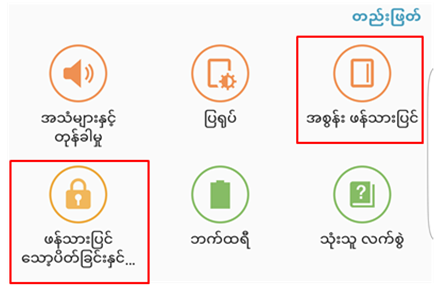At Hansem Global, our Language Localization Team often grapples with the complexities of editing over 50 foreign languages, facing issues like character corruption. This is particularly evident when adopting the global standard Unicode method without a deep understanding of each language’s unique character system. Our team has dedicated significant effort to identifying and resolving these issues, and we’re excited to share our insights and strategies, with a special focus on the Myanmar language.
Understanding Myanmar Language Text in Global Content Development
Developing global content using Indic scripts presents unique challenges, especially with languages like Myanmar. Our aim is to shed light on Myanmar’s intricate character system, which stands out as particularly complex among Indic scripts.
Key Differences Between Zawgyi and Unicode in Myanmar Language Processing
1. Character Set
ㆍUnicode adheres to an international standard character set.
ㆍZawgyi uses a unique, proprietary character set.
| Myanmar keyboard (Zawgyi) | Myanmar keyboard (Unicode) |
 |  |
2. Compatibility
ㆍZawgyi often shows incompatibility with Unicode systems, leading to challenges in data exchange across different platforms.
3. Support and Standardization
ㆍZawgyi is a non-standard format, predominantly used within certain Myanmar communities and specific software.
ㆍUnicode, in contrast, is internationally standardized and widely supported by contemporary software and platforms.

4. Fonts and Text Rendering
ㆍZawgyi and Unicode employ distinct font and text rendering methods, often leading to display issues when switching between systems.
| Unicode | Zawgyi |
 |  |
5. Encoding Methods
ㆍZawgyi uses a specific encoding format for Myanmar language, different from Unicode’s methodology.
ㆍUnicode primarily utilizes UTF-8 encoding, a variable-length method that efficiently encodes Unicode characters and is supported globally as the standard.
Choosing the Right Myanmar Fonts
Several Myanmar fonts are available, such as Zawgyi Font, Myanmar3 Font, Pyidaungsu Font, and Padauk Font. It’s crucial to prioritize fonts that adhere to international standards and ensure compatibility across diverse platforms.

Hansem Global’s Approach to Myanmar Language Localization
Handling the Myanmar language effectively means often favoring Unicode and UTF-8 for their universal applicability. However, certain scenarios may necessitate the use of Zawgyi encoding or other specific fonts. It’s important to align with the requirements of the particular environment in these cases.
Developing a system that accommodates these unique language processing needs is essential. At Hansem Global, we use various Scripts and Greps to automatically detect and correct potential errors. Our comprehensive approach encompasses all aspects of localization, not just translation. This enables us to address issues effectively and manage complex language processing, ensuring the production of high-quality global content.






